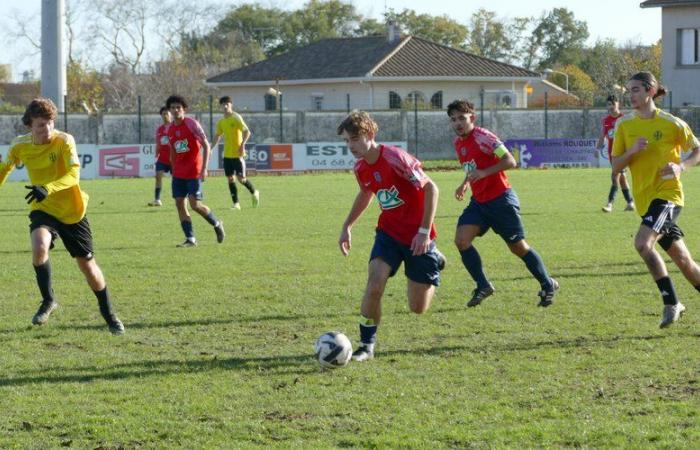
the essential
The weekend was rich in competitions for the different COC Castelnaudary teams, who faced several clubs.
Regional 1 senior championship. In Colomiers, team 1 of the COC snatched a meritorious 2-2 draw. For the Cocistes, 2 goals from Mario Mendy. In the standings, the COC is 12th with 2 draws and 4 defeats.
Gambardella Cup. The U18s lost to the Castanet team which played a division above them. Still a good performance for GOAL in this prestigious competition. Too bad for this waltz of cards: eight yellows in total (three for GOAL and five for Castanet), and especially the two reds inflicted on the foals of Antoine Richon and Fabien Soulet, Louis Milhau and Noham Dusapin. The team: Louis Milhau, Enzo Bauzou, Thibault Ayza, Jules Lasserre, Noham Dusapin, Gaëtan Louise Rose, Lucas Anglio, Evan Palanque, Raphaël Pélissier, Maxime Da Costa, Adrian Sanchez-Dalias, Gianluca Gios, Vincent Herreras, Aaron Totoasy, Mohamed Diakite.
Cut reserves. The match between COC II and Fanjeaux II has been postponed. COC III in Trèbes II, in group F, obtained a very good draw 2 to 2.
Also read:
Echoes of Chaurian Football: a look back at this weekend’s matches
U17 N1 Championship. The match which was to be played against Trèbes has been postponed.
U17 N2 Championship. Victory for GOAL II against Gruissan, 3 goals to 1. Still undefeated, the U17 N2 are at the top of their group: six wins and a draw, 29 goals scored and 7 conceded.
U15 N1 Championship. GOAL won away against Piège Lauragais Malepère with a score of 5 to 1. This team is ranked 2nd with 5 victories and 1 draw for only 1 defeat.
U15 N2 Championship. In Villemoustaussou against Trapel, GOAL won a great victory 4 to 1. The U15 N2 are in 3rd place with 6 victories and 2 defeats.





